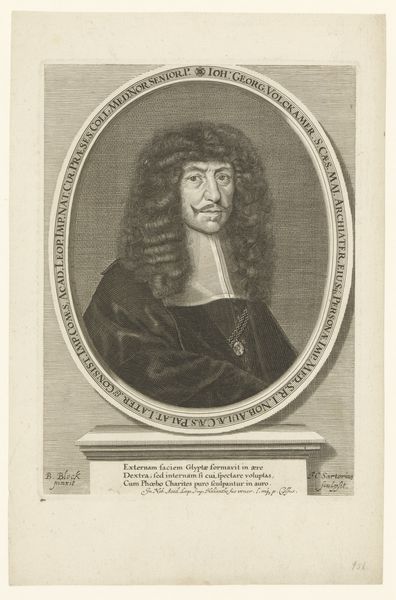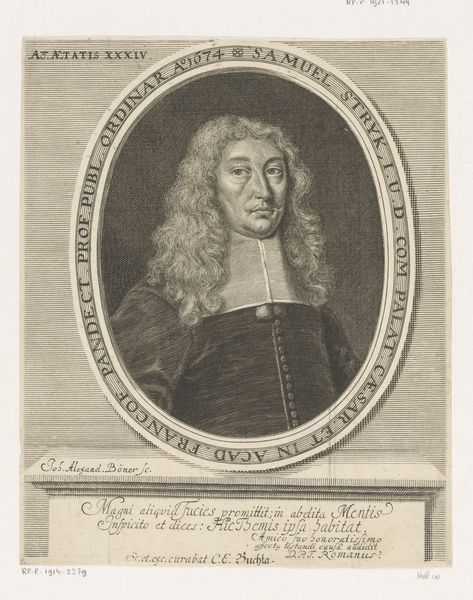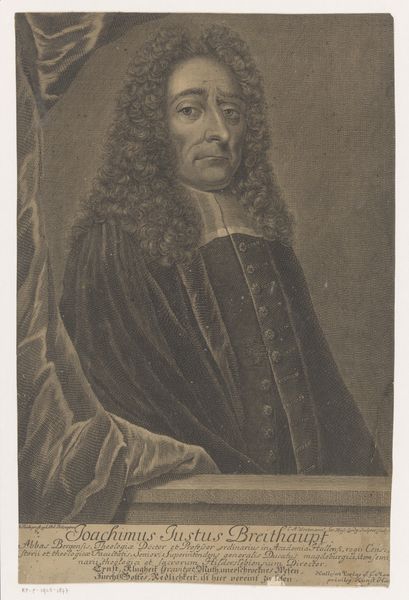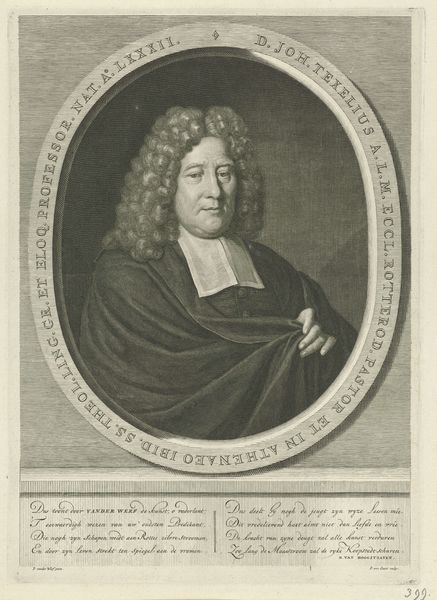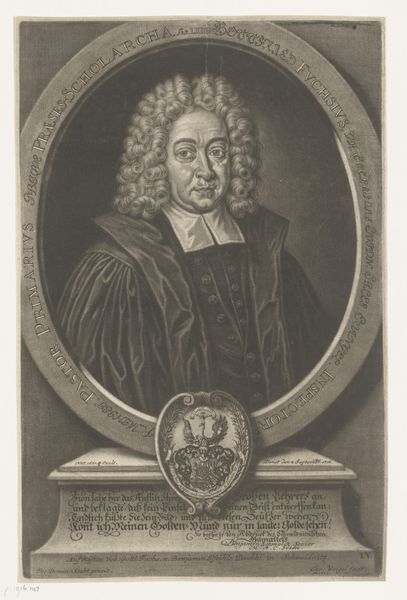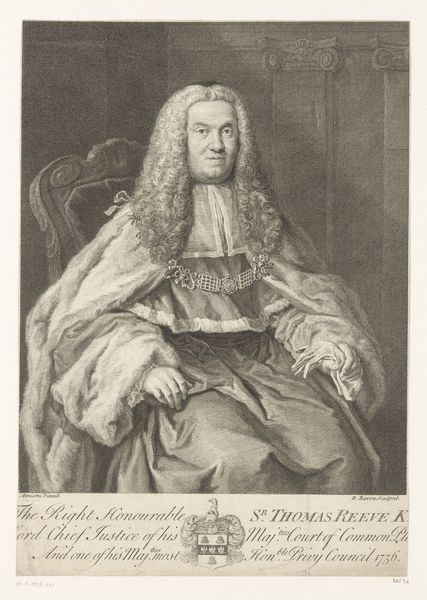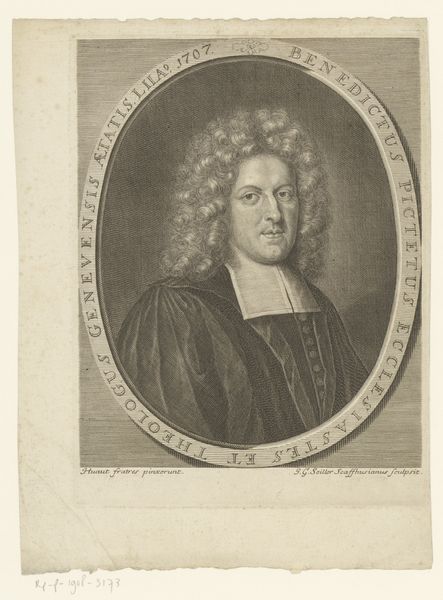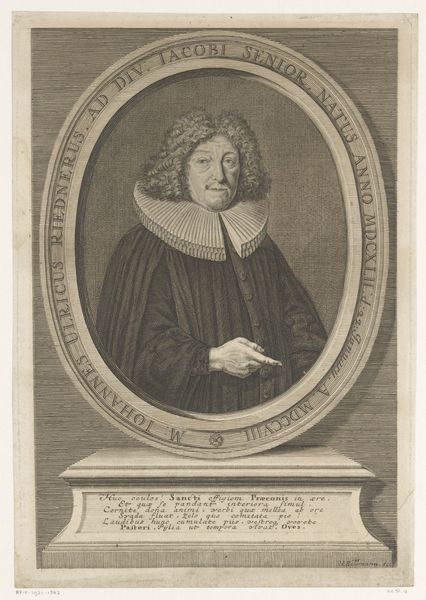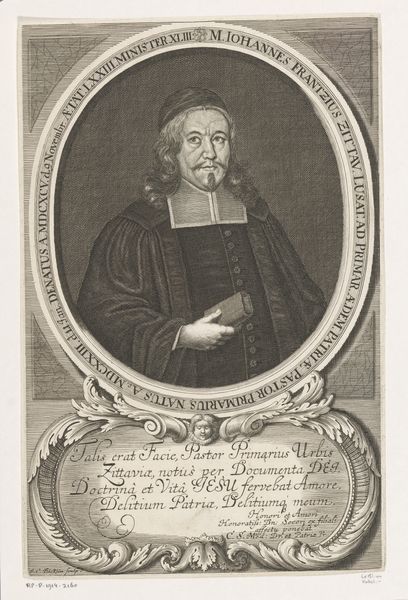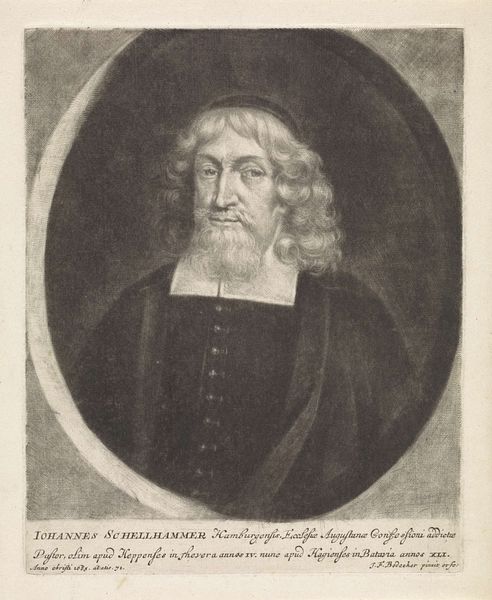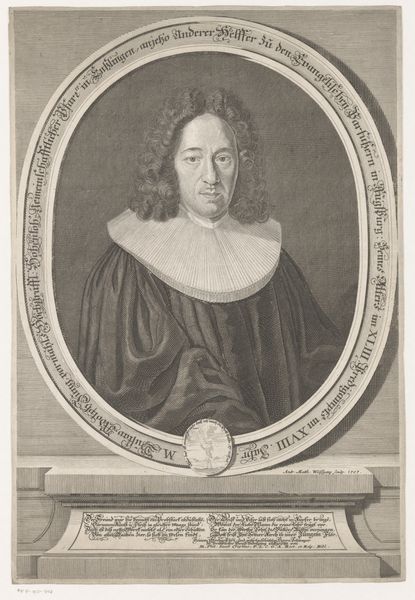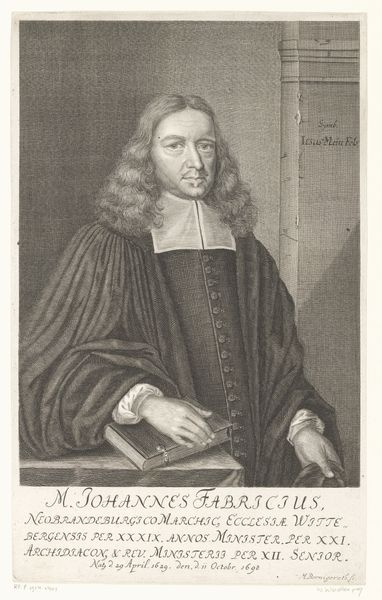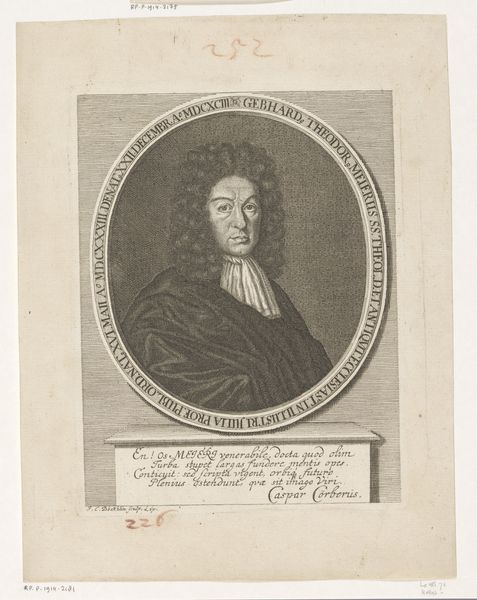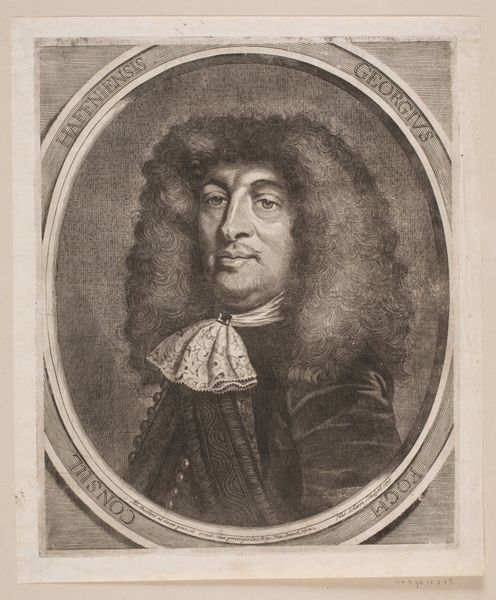
engraving
#
portrait
#
baroque
#
historical photography
#
portrait reference
#
history-painting
#
engraving
Dimensions: height 284 mm, width 229 mm
Copyright: Rijks Museum: Open Domain
Curator: We’re looking at an engraving made in 1752 by John (II) Faber: a portrait of Gomez de Mesquita. Editor: Stark and rather austere, wouldn’t you say? The tonal range is very limited, giving a flattened effect despite the textural richness suggested in the man's clothing and hair. Curator: The limitations of engraving perhaps? What interests me is the subject's clothing: that dark, almost academic gown combined with the prominent beard and tall hat evokes a very particular image. We're seeing elements that signify scholarly authority as much as perhaps religious identity. Editor: Indeed, clothing provides powerful cues! Notice how the white clerical collar pops against the dark robe— a beacon of purity and spiritual office, framing his face like a halo, but his face displays intelligence with just a hint of weariness. Is that wisdom earned through long study, or is there perhaps a deeper melancholic symbolism in the rendering of the eyes? Curator: The gaze is direct, which immediately draws you into a psychological game, the artist invites an intimate engagement. Although this piece leans towards conventional Baroque portraiture in terms of composition, there’s an element of calculated theatricality, of creating a symbolic identity here. It does not quite capture a personality in the raw. Editor: Exactly, the subject’s dress and bearing echo established archetypes – the learned rabbi, the sober judge… such cultural figures all bearing connotations that reinforce an image of solemn responsibility, almost of divine obligation, the symbols of a well-established role passed down from history. Curator: I see what you mean, so it is not just a simple likeness but a statement of position and purpose, neatly communicated in a specific historical idiom. Editor: An enduring symbol, you could say! The beauty is not only what it depicts but what that image invokes, like cultural echoes, each symbolic layer revealing a depth we might otherwise miss. Curator: Right! So by examining its components and historical context we find the core ideas elegantly visualized. Editor: Yes, the semiotics of status. Now I am ready to wander off and consider another artwork… thank you for pointing to new depths here!
Comments
No comments
Be the first to comment and join the conversation on the ultimate creative platform.
